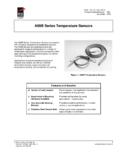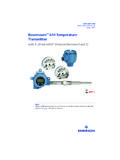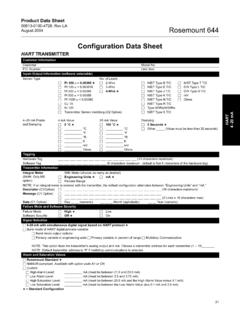Transcription of Meeting Requirements for Controlled Room …
1 Batiment Avant Centre 13 Chemin du Levant 01210 Ferney Voltaire France Phone: Fax: Meeting Requirements for Controlled room Temperature Storage of Medicines October 2012 ii This report was commissioned by Optimize: Immunization Systems and Technologies for Tomorrow, a World Health Organization and PATH collaboration. The report was authored by John Lloyd and Steve McCarney, consultants. Contact information: Joanie Robertson Manager Mail PO Box 900922 Seattle, WA 98109 USA Street 2201 Westlake Avenue, Suite 200 Seattle, WA 98121 USA Suggested citation: PATH. Meeting Requirements for Controlled room Temperature Storage of Medicines. Seattle: PATH; 2012. This work was funded in whole or part by a grant from the Bill & Melinda Gates Foundation.
2 The views expressed herein are solely those of the authors and do not necessarily reflect the views of the Foundation. Copyright 2012, Program for Appropriate Technology in Health (PATH). All rights reserved. The material in this document may be freely used for educational or noncommercial purposes, provided that the material is accompanied by an acknowledgment. iii Meeting Requirements for Controlled room Temperature Storage of Medicines October 2012 iv Table of contents Acronyms .. v Executive summary .. vi Introduction .. 1 Method .. 2 Assessment of storage parameters .. 3 Engineering assessment of feasibility and system Requirements for five potential alternative solutions .. 4 Natural or passive conditioning .. 4 Part-time space 4 Full-time space 4 Specialized space conditioning and humidity control.
3 4 Conditioned room within a room or kit cool room refrigerator .. 5 Improving the thermal integrity of roof, walls, windows, and doors .. 5 Analysis and synthesis of feasible solutions .. 5 Results .. 5 High energy consumption .. 6 High energy consumption .. 6 Low energy consumption; size applicable to region .. 6 Solution 1: Natural or passive conditioning .. 6 Solution 2: Part-time space air-conditioning .. 6 Solution 3: Full-time space air-conditioning .. 6 Solution 4: Specialized space conditioning and humidity control .. 6 Solution 5: room within a room or kit cool room .. 7 Optimal choice among the five alternative solutions .. 7 Discussion .. 8 Annex 1. Packed volumes of CRT medicines in Tunisia .. 10 v Acronyms CRT Controlled room temperature CSB basic health centers CTC Controlled temperature chain DRSB Tunisian Ministry of Health, Department of Preventive Medicine HVAC heating, ventilating, and cooling PATH Program for Appropriate Technology in Health PCT Central Pharmacy of Tunisia vi Executive summary Currently, Tunisia does not store medicines labeled for Controlled room temperature (CRT) storage in temperature- Controlled conditions at the regional level or lower levels of the supply chain.
4 Project Optimize and the Tunisian Ministry of Public Health are collaborating to explore new logistics and supply chain solutions that can optimize the vaccine supply chain. Anticipating that the Tunisian government will soon formulate a CRT policy, as these policies already exist in Europe and the United States, project Optimize commissioned a study assessing the least-cost, most energy-efficient solution for pharmaceutical stores at the regional and district level. Tunisian engineering consultants, commissioned by Optimize for this study, evaluated five potential solutions. The study concludes that of the five solutions evaluated, one is the best when sized respectively for regional and district applications. The selected solution is an insulated chamber with temperature control to maintain 15 C to 25 C even in extreme summer and winter conditions in Tunisia.
5 To achieve acceptable levels of energy efficiency, investment is also required to insulate and to seal the existing, aging building structure. The significance of this finding for project Optimize reaches beyond the appropriate storage of medicines because in the future some vaccines may be stored and transported in a Controlled temperature chain, and there may be opportunities in the future to integrate the storage of different CRT products in dedicated, high energy-efficient warehousing. Introduction In anticipation of alternate vaccine storage temperature licensing in the future, project Optimize conducted this study to assess the present practices for storing medical products at temperatures greater than the traditional vaccine cold chain (2 C to 8 C). Project Optimize is a collaboration between the World Health Organization and PATH to identify ways in which supply chains can be optimized to meet the demands of an increasingly large and costly portfolio of vaccines.
6 The focus of the study was at the regional and district levels in Tunisia, a participant country in project Optimize. About one-third of the medicines manufactured in Europe and the United States are now being tested and labeled for storage at Controlled room temperature (CRT), mostly in the range of 15 C to 25 C at a relative humidity of 60%, and the proportion is increasing. Yet in developing countries where temperature and humidity can be far outside this range, there is little evidence that a suitable and Controlled temperature chain (CTC) is being established for CRT medicines. No vaccines are stored at CRT conditions at present. Tunisia has not yet regulated locally manufactured medicines for CRT storage and does not explicitly require central pharmacy stores to provide an appropriate CTC for imported medicines, many of which are labeled for CRT storage.
7 By contrast, certain medicines requiring refrigeration (2 C to 8 C) are listed with this requirement in the national drug list, and pharmaceutical stores at every level of the distribution chain store them in refrigerators or cold rooms. Project Optimize in Tunisia examined the impact of streamlining the distribution chain to meet the needs and expectations of the future (2015 2020) by a range of interventions including the physical integration of delivery systems for medicines with vaccines and establishing a highly efficient and effective CTC. In this context, the project investigated the challenges and benefits of different cooling options for CRT storage for medicines at regional- and district-level stores. Future national regulations will almost certainly be aligned with international Requirements for CRT drug storage.
8 Furthermore, project Optimize is examining the feasibility of progressively migrating the more heat-stable vaccines towards a CTC that resembles the CRT Requirements for medicines. Perhaps, in the future, there will be a combined CTC for medicines and vaccines with sub-zero freezing, refrigeration at 2 C to 8 C, and a CTC at 15 C to 25 C. But the primary aim of this study is to assess the least-cost, most energy-efficient solutions for controlling the temperature of storage at the regional and district levels of medicines classified for CRT. The specific objectives of the study in Tunisia were to: Gain experience with CRT storage Requirements in preparation for the possibility of future vaccines licensed for storage within an alternate CTC similar to CRT. Assess the most economical solutions for storage of CRT medicines in the context of regional- and district-level stores in Kasserine, Tunisia.
9 Propose priorities for actions to prepare the country for compliance with international CRT regulations. 2 Method The study focused specifically on the storage of CRT medicines at one regional store and one out of three district stores in the Optimize project zone of Kasserine, a region of west central Tunisia. Figure 1 shows the distribution system of medicines and vaccines during the project. Figure 1. Summary of distribution system of medicines and vaccines in Kasserine, Tunisia The study was conducted in three steps: 1. Assessment of storage parameters. a. Packed volume of medicines for CRT storage. b. Assessment of monthly ambient temperature profile. c. Energy audit of the regional store and three district stores. 2. Engineering assessment of the feasibility and system Requirements for five potential alternative solutions with and without building improvements to roof, walls, and floor to achieve better environmental efficiency.
10 A. Natural or passive conditioning. b. Part-time space conditioning. c. Full-time space conditioning. d. Specialized space conditioning and humidity control. e. Dedicated conditioned room within a room or dedicated storage cabinet ( , kit cool room with heater). 3 3. Analysis and synthesis of feasible solutions. Assessment of storage parameters The project team estimated the maximum volume of packed medicines labeled for CRT storage sufficient for three months in the Kasserine regional store and one of the three project districts (see Table 1). The estimates were based on a review of the medicines in current use in the region (see Annex 1). Table 1. Estimated packed volume of medicines by store Store Packed volume or CRT drugs per 3-month supply intervala CRT as percent of all medicines L summer maximum L winter maximum % of medicine types District: Hassi el Frid 780 2,500 33% Region: Kasserine 8,820 14,700 33% a.
















